Table of Contents
Introduction
Aquaculture is today among the most rapidly expanding activities in contemporary agriculture, providing a secure means of meeting increasing global seafood demand.
Contrary to traditional fishing, which relies primarily on natural water bodies and is liable to overexploitation, aquaculture offers a sheltered and sustainable method of producing fish for food, business, and income.
Fish farmers, businesspeople, and even household consumers today are looking for high-tech ways of fish culture to be profitable and environmentally friendly. At its most basic level, fish farming is not only raising fish—it is raising an ecosystem that promotes growth, minimizes waste, and optimizes production.
The international aquaculture industry has seen incredibly significant development in the past ten years with the advent of technologies such as aquaponic fish rearing and recirculating aquaculture systems (RAS).
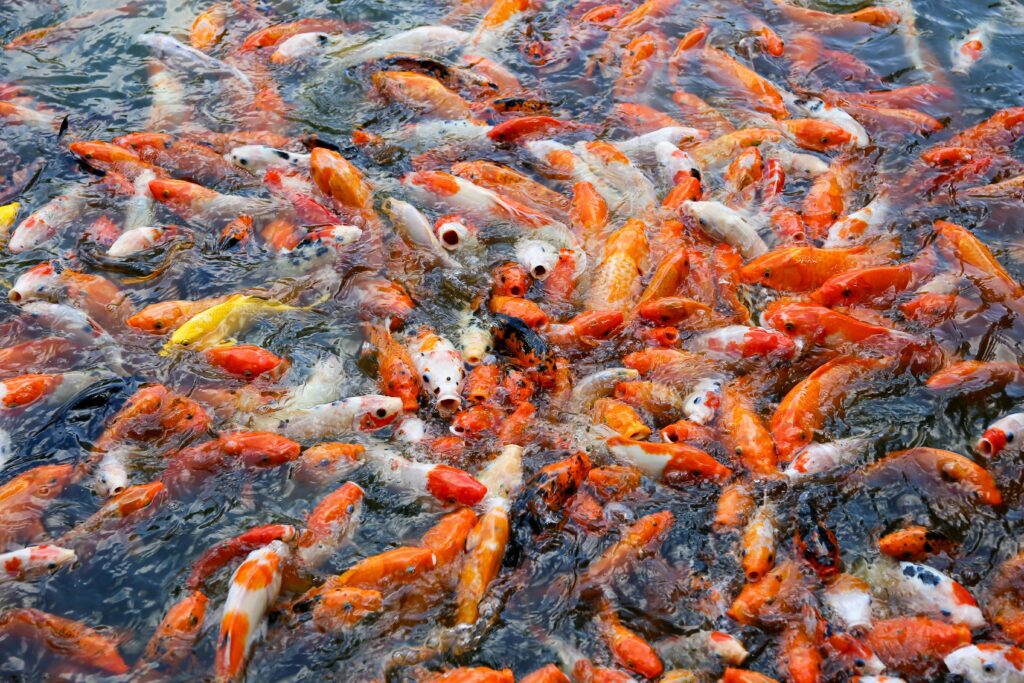
These systems tie science, technology, and ecology together to form sustainable farming systems that are profitable but environmentally friendly.
With water recycling, plant integration, and sustainable feeding, farmers are finding new means of enhancing fish health in addition to boosting production without overexploiting natural resources.
In this guide, we will be discussing three mighty secrets of fish farming that can convert small ponds, extensive farms, or urban establishments into successful businesses. They are in terms of optimum utilization of water, implementation of aquaponic farming, and deploying recirculating aquaculture for better yield management.
Being a beginner who wants to begin a small-scale venture or a commercial farmer who wants to scale operations, this blog will give you the working knowledge, examples, and strategies with which you can thrive.
Fish farming is not merely rearing fish but the adaptation of sustainable farming principles that guarantee food security and future generations. With proper information and equipment, farmers can provide quality fish output without destroying the balance of nature.
Let us proceed with the advantages of fish farming and how fish farming is among the most promising activities in contemporary agriculture.
Benefits of Fish Farming
Aquaculture is now an emerging phenomenon in the food and agriculture industry. It not only supplies an assured amount of protein but also creates business that is future-proof, land-saving cultivation, and alternative food chains.
All these advantages are encouraging farmers to implement practices such as aquaponic production and recirculating aquaculture so that they can reap maximum profits, hence profit and sustainability go hand in hand in the future. Let us go through the salient advantages in detail.
Stable Income and Economic Growth
The largest advantage of fish farming might be the potential for stable income. Conventional fishing is more random based on natural conditions like the season, weather, and health of bodies of water.
Fish farming, however, has controlled farms where farmers can control feeding, growth patterns, and harvesting periods. This consistency allows for year-round production, meaning that businesspeople and farmers both have a steady income.
Also, with the rise in demand for fish worldwide, businesspeople can make the most of local markets and international markets, and fish farming turns out to be a profitable venture.
Effective Use of Land and Water
Compared to other forms of farming that require large tracts of land for cultivation, fish farming requires less land and controlled water systems. Farmers can grow ponds, tanks, or even indoor rooms to raise fish in an efficient manner.
Aquaponic farming goes one step ahead by integrating fish tanks and plant beds, as the fish waste is used to nourish the crops and the plants purify water. This two-component system optimizes production in restricted space and saves natural resources.
Recirculating aquaculture also reuses water, minimizing wastage and harm to the environment. This effectiveness makes fish farming best suited for both rural and urban premises.
High Nutritional Value and Food Security
Fish is a world-known provider of lean protein, essential fatty acids, and micronutrients. By increasing fish farming activities, communities will be in a position to provide consistent amounts of healthy food.
Compared to wild fish, farmed fish are raised under safe conditions, limiting exposure to impurities and guaranteeing quality. For areas with food deficits, aquaculture offers a sustainable solution to combat malnutrition and improve food security.
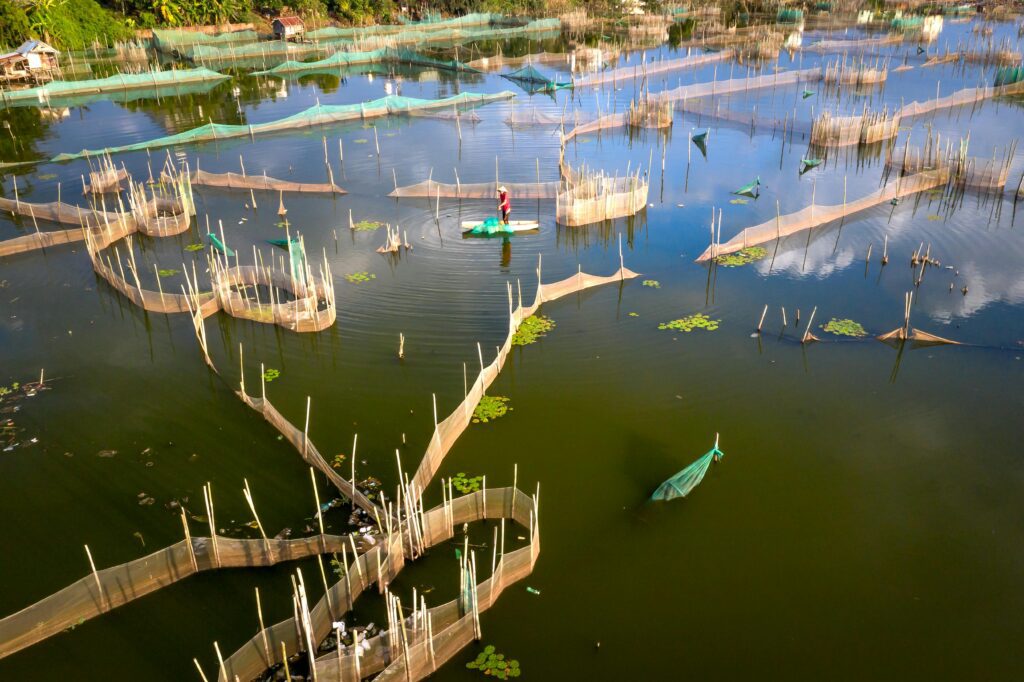
The inclusion of recirculating aquaculture adds this benefit even more by providing good water quality and good fish growth to provide fresh products all year round.
Environmentally Friendly and Sustainable Practices
New fish farming focuses on sustainability so that growth does not harm the environment. Practices such as aquaponic farming and recirculating aquaculture are indicative of this advantage. Aquaponics minimizes the consumption of chemical fertilizers, as fish waste acts as a natural fertilizer for plants.
Recirculating systems also minimize water pollution by cleaning and recycling the same water, thus avoiding toxic discharge into the environment.
These sustainable approaches not only preserve biodiversity but also address world sustainability objectives, making fish farming an environmentally friendly agricultural practice.
Employment Generation and Community Development
Another important advantage of fish farming is its ability to generate employment and develop communities. From feed production and hatchery management to processing and marketing, the value chain for fish farming generates different types of jobs.
Youths, women, and small-scale farmers can all be involved in various levels of production to build more resilient rural communities and improve economic empowerment.
Communities with aquaponic farming projects typically have the additional advantage, as the system grows fish and vegetables simultaneously, sustaining diversified means of income.
Fish Farming Methods
The techniques employed in fish farming not only decide the yield of a farm but also its sustainability, affordability, and long-term viability. Gradually, from simple pond models, farming techniques have developed to very sophisticated technology-based systems.
Now, techniques such as aquaponic fish farming and recirculating aquaculture are becoming increasingly popular as they tackle today’s problems of water scarcity, urbanization, and water pollution. Let us learn the most significant practices that are applied in fish farming.
Traditional Pond-Based Fish Farming
Pond-based fish farming is even today among the most common practiced globally. Natural or artificial ponds are utilized by farmers to cultivate species like carp, catfish, or tilapia. The operation remains relatively low-cost and most appropriate for rural setups with an empty land area and water supply.
Farmers can stock the ponds, provide fish with commercial feed or organic feed (e.g., algae, plankton, or farm waste), and harvest when the fish are of market size. Despite pond culture being easy and convenient, it is plagued by water quality management, disease, and feed availability issues.
However, it is the basis of most small-scale farmers.
Cage and Tank Fish Farming
Cage and tank systems are substitutes for open ponds. Cage culture is suspended cages in rivers, lakes, or coastal seas, where fish develop but are exposed to natural water flow. The system occupies less land but employs more intensive tracking to avoid escapes and water contamination.
Tank systems consist of concrete or plastic tanks filled with water and aerated water systems. Tanks offer simpler fish health, feeding, and growth cycles to manage. Both processes are better than the conventional pond, particularly where space or water bodies are scarce.
Aquaponic Farming: Smart Integration
One of the most sophisticated processes employed in contemporary aquaculture is aquaponic farming, in which fish production is integrated with hydroponics. In this process, fish are housed in tanks where their own waste is utilized as organic fertilizer for plants.
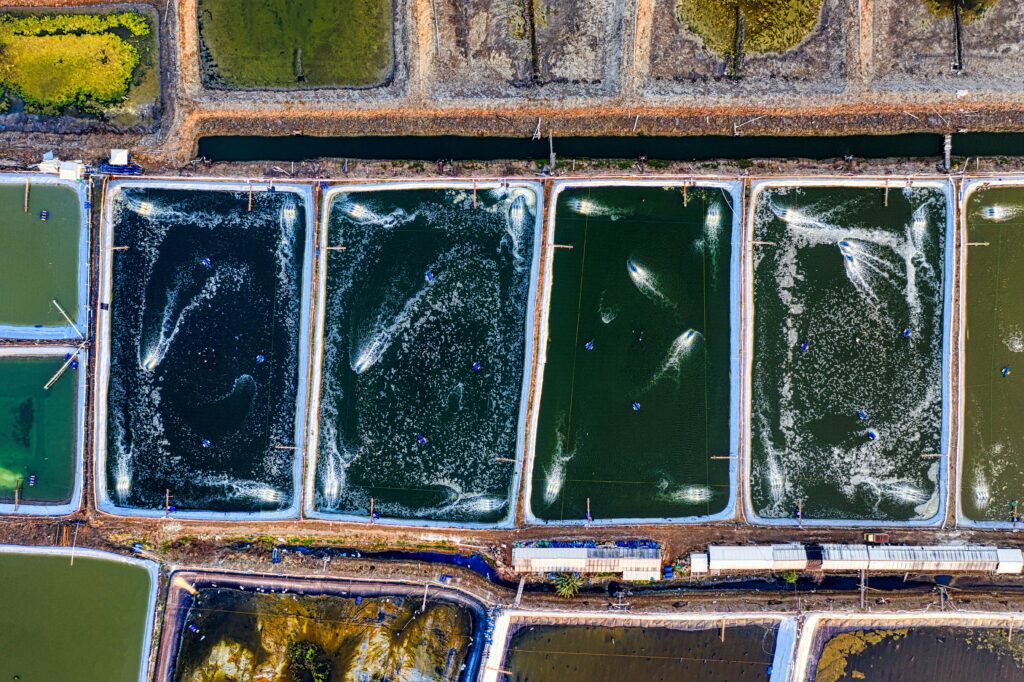
The plants, however, filter the water and recirculate it back into the fish tanks. It is a closed system, self-cycling system that yields fish and crops. Aquaponics is especially of interest to urban entrepreneurs and farmers who intend to achieve maximum production using little space.
It entails initial investment in machinery but saves on the long-term expenses of fertilizers and water. The system is also highly sustainable, thus it is the ideal option for future agriculture.
Recirculating Aquaculture Systems (RAS)
Recirculating aquaculture is probably the most effective and innovative method in aquaculture at the moment. In this process, fish are grown in indoor or outdoor tanks in which water is continuously filtered, treated, and recirculated.
In RAS, producers can manage all the conditions of the environment, such as oxygen levels, temperature, and waste. This provides the best fish health and growth rates. Although initial installation is costly, the system saves water by as much as 90% relative to conventional methods.
It also averts possible disease epidemics and ecosystem deterioration. Recirculating aquaculture is very scalable and is thus commonly used in commercial and industrial-scale fish farming processes.
Integrated and Hybrid Approaches
Most farmers now are using various methods to devise hybrid systems as effective as possible. A farmer, for instance, may integrate pond farming with aquaponics or recirculating technology with a tank system.
These integrations become flexible such that farmers can modify their approach depending on local conditions, resource availability, and markets. Hybrid approaches are particularly beneficial for areas with little water or cities where land is costly.
Challenges in Fish Farming
Although fish farming holds tremendous potential for expansion and sustainability, this does not come without challenges. The farmer is usually confronted by practical, financial, and environmental challenges that can be production and profit hindrances.
It is important to know these challenges because it helps farmers and investors budget better, utilize more sophisticated interventions, and achieve long-term success.
From the conventional pond-based systems to newer systems such as aquaponic farming and recirculating aquaculture, every method has its share of challenges.
Water Quality Management
One of the main challenges in fish farming is to ensure good water quality. Fish are very sensitive to oxygen, temperature, and pH changes. Poor water quality causes stress, growth retardation, and vulnerability to disease.
Water quality in traditional ponds is controlled by factors outside the pond like rainfall, evaporation, and pollution. In advanced systems like recirculating aquaculture, while water reuse reduces wastage, filters need regular monitoring and maintenance.
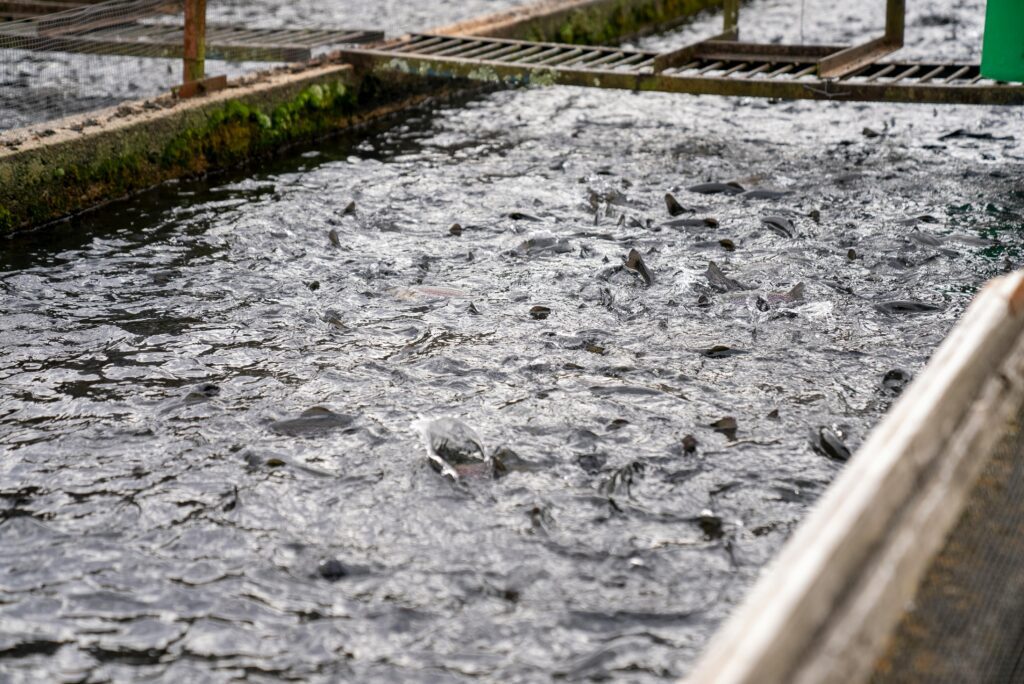
In the absence of proper water management, productivity is significantly reduced.
High Initial Investment Costs
Installation of modern fish farming systems is expensive to small farmers. Traditional ponds are inexpensive to install, but sophisticated systems like aquaponic farming and recirculating aquaculture are capital expensive.
Aquaponic farming entails the installation of tanks, grow beds, pumps, and filter units, and recirculating aquaculture entails sophisticated water treatment machinery. Although the two systems are cost saving in the long term, they are expense intensive to set up, and this makes them unaffordable to many farmers.
Disease and Parasite Outbreaks
Fish are susceptible to a range of diseases brought about by bacteria, fungi, and parasites. Disease has a rapid impact under overcrowded rearing conditions, at times leading to massive losses.
Pond systems are particularly susceptible because disease-causing organisms build up rapidly in stagnant or contaminated water. Even within the confines of RAS’s stringent environment, mechanical failure or water imbalance may lead to outbreaks.
Fish must be watched closely, vaccinated from sickness, and sometimes costly veterinarian care. Disease management is a serious problem in both small and large-scale farms.
Feed Supply and Rising Price
Feed is among the greatest expenses in fish rearing, normally accounting for more than 50% of the expense. Quality feed ensures faster growth and healthier fish but depends on availability and cost relative to market conditions.
Farmers using low-grade or unbalanced diets produce low yields and extended production periods. Some of the struggle is removed in aquaponic farming because plant growth is aided by fish waste, but fish must still be fed correctly. Feed to cost ratio is a day-to-day battle.
Environmental and Regulatory Issues Sustainability is where fish farming exists today, but there are still environmental issues. Excess waste, antibiotic overuse, and water pollution pose the risk of damaging ecosystems and drawing regulatory attention.
Pond-based systems in the past can cause water pollution if not controlled effectively. While recirculating aquaculture has low external pollution, it needs high amounts of energy and raises concerns about its carbon footprint.
Farmers also have to deal with government policy, licenses, and environmental regulation that differ greatly by location.
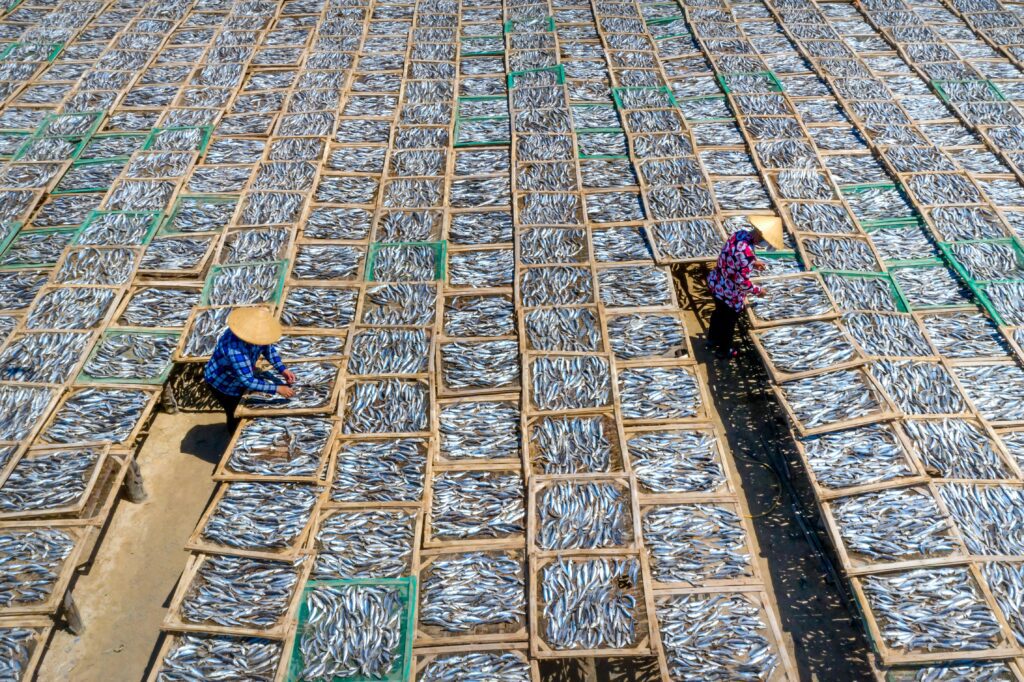
Skill and Knowledge Gaps
Aquaculture needs technical expertise, from water management and feeding to diagnosis of disease and maintenance of the system. Most small-scale farmers, particularly in the countryside, have no access to adequate training or new technology.
Despite the fact that new techniques such as aquaponic farming and RAS are very much stimulating, they are more technical in nature than old methods. Farmers can suffer system collapse and economic losses without training. Closing this gap of knowledge is a critical challenge to the industry.
Solutions in Fish Farming
Each obstacle in fish farming is an opportunity for innovation and expansion. Farmers can overcome obstacles and create sustainable, rewarding systems through the appropriate measures.
The new technologies, training, and sustainable methods provide small- and commercial-scale farmers with manageable solutions. From more efficient water management to smart feeding, adopting methods such as aquaponic farming and recirculating aquaculture, farmers can succeed in the long term with proper planning.
Access to Finance and Training Program
As an entry barrier to high startup costs, governments, NGOs, and financial institutions are providing subsidies, soft loans, and training programs.
Agriculturalists willing to take on recirculating aquaculture or aquaponic cultivation can choose from government subsidy or private financing schemes in support of green agriculture.
Training programs have a similarly basic function, providing farmers with technical know-how in areas such as water chemistry, diet preparation, and system maintenance. Pairing capital supply with skills transfer, entry barriers are slowly being mitigated.
Adoption of Renewable Energy Solutions
Energy use, particularly in recirculation aquaculture systems, may be high. Farmers can make production more sustainable by using renewable energy sources such as biogas plants and solar panels.
Solar pumps and aerators, for example, minimize dependence on costly electricity, thereby making systems affordable and environmentally friendly. Farmers can increase profit margins and popularize green energy in agriculture by minimizing energy use.
Community-Based Models and Cooperative Farming
Cooperative strategies give small-scale farmers a link to resources and information they cannot provide on their own. Cooperative arrangements enable farmers to pool facilities, purchase feed at cheaper rates in bulk, and sell their products better.
Rural community-based aquaponic farming systems not only enhance food security but also broaden income diversification by growing fish and vegetables. These systems link rural economies and enable fish farming even for farmers with little land and capital.
Frequently Asked Questions (FAQs)
1. What is fish farming and why is it so vital today?
Fish farming is the cultivation of fish in a controlled environment like ponds, tanks, or sophisticated systems. It is significant as it offers a sustainable source of protein food, relieves pressure on wild fisheries, and offers employment opportunities.
With the increase in world demand for seafood, fish farming has emerged as a sustainable food security and economic growth option.
2. What are the similarities between aquaponic farming and conventional fish farming?
Aquaponic farming is a sophisticated system integrating fish aquaculture with hydroponics. Fish excreta serve as fertilizers in plants, and plants serve as biological filtration to clean water for fish during aquaponic farming.
Aquaponics differs from pond-based conventional farming in the aspect of having a closed system in which water is recycled, fertilizers are minimized, and vegetables and fish are cultured together. Aquaponics is best applicable for urban or small-scale farming.
3. What are the advantages of recirculating aquaculture systems (RAS)?
Recirculating aquaculture offers a number of advantages, such as minimizing water consumption, enhancing disease control, and promoting better fish health. Water is filtered continuously and recycled in RAS, thus providing cleaner conditions and increased growth rates.
Although more investment goes into installing it, it is very efficient and sustainable and thus very suitable for large-scale fish farming.
4. Is fish farming feasible for small farmers?
Yes, fish farming can prove highly profitable for small farmers if done in a proper manner. By beginning with inexpensive tank or pond systems and building up on practices such as aquaponic farming or RAS, farmers are able to cut down costs and optimize returns.
Moreover, fresh fish commands strong demand in the majority of local markets, providing small farmers with stable sources of revenues.
5. How can farmers minimize the risks of disease in fish farming?
The disease risks can be minimized by farmers with clean water, not overcrowding, and healthy feeding habits. Biosecurity practices, regular water testing, and vaccination programs are the key.
With recirculating aquaculture, the use of advanced filtration systems and constant monitoring make it simpler to ward off disease outbreaks. With farmers using aquaponic farming, natural ecological equilibrium between fish and plants also assists in healthier systems.
Conclusion
Aquaculture or fish farming has developed very fast as one of the most environmentally friendly and sustainable businesses in contemporary agriculture. From village ponds to high-tech urban facilities, the operation holds enormous potential for food security, economic development, and ecological sustainability.
As we have seen in the course of this guide, the future of fish farming is to become even more intelligent, more efficient through practices such as aquaponic farming and recirculating aquaculture. These methods not only optimize production but also save water, minimize waste, and promote healthier ecosystems.
The three potent secrets to successful fish farming are water conservation, systems integration, and ecologically friendly management practices.
Farmers who concentrate on ensuring that the quality of the water is maintained, optimizing feeding methods, and implementing the most modern technology possible can develop profitable businesses without harming the environment.
Whether from aquaponics, involving closing the loop in a system growing both fish and plants, or recirculating aquaculture, optimizing the utilization of water and the health of fish, solutions are practical and future-oriented.
Of course, challenges like very high initial capital requirements, epidemics, and lack of technical expertise continue. But, as we noted, these can be overcome through planning in the first place, having training available, and assistance from government and community programs.
Farmers adopting new solutions will not only be raising productivity but also ensuring long-term success in an internationalized world.
Overall, fish farming is not raising fish—producing a future of sustainability in farming and food production. Through learning, changing, and applying these techniques, the family farmer to the big agribusiness can prosper.
If you are willing to enter this business, now is the time to explore aquaponic farming or recirculating aquaculture and realize the full potential of fish farming.
